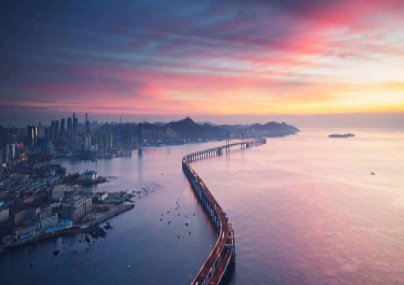Slumping oil prices will not halt a massive ramp-up in Gulf infrastructure spending, as rich nations deploy huge reserves to maintain a breakneck development pace and the rest turn to buoyant funding markets.
However, states are being urged to consider the most effective funding mix for these schemes in the longer term, especially against a backdrop of lower oil prices.
The World Bank estimates up to $500 billion will be spent by Gulf countries on infrastructure by 2020, as governments seek to improve the lives of citizens and create jobs.
With trillions of dollars of reserves between them, Saudi Arabia, Abu Dhabi and Qatar have been increasingly by-passing banks due to frustration at the time it takes to get funding.
In Qatar, "more reliance on self-financing supported by large fiscal surpluses" pushed outstanding credit to the public sector down 3.7 percent between January and August, according to the Ministry of Development Planning and Statistics.
"We fund infrastructure projects by the state of Qatar and we try to give the opportunity also to the private sector on some of the opportunities," Economy Minister Sheikh Ahmed bin Jassim al-Thani told Reuters on the sidelines of an investment event in London.
Gulf infrastructure loans totalled $8.94 billion in the first nine months of 2014, compared with $16.12 billion in 2013, according to data from Project Finance International, a Thomson Reuters unit.
In the past, large-scale projects such as Qatar's Barzan gas scheme and Saudi's Sadara chemicals complex had most of their total costs, worth $10 billion and $20 billion respectively, covered by debt.
But now, schemes like the Riyadh metro, costing $22.5 billion, and the UAE's first nuclear power plant, totalling $20 billion, are being fully or majority paid for by the state.
RESERVES
Such enormous burdens might seem untenable when Gulf states may face a sustained period of lower oil prices, which have almost halved since June.
The International Monetary Fund has also warned some Gulf nations must reduce public spending to avoid burning through their savings.
But governments are now prioritising infrastructure spending and some have methods to avoid the budgetary squeeze.
Saudi funds some of its large infrastructure projects off-budget from a separate central bank account, which contained 514 billion riyals in October.
Both Kuwait's finance minister and the UAE's economy minister were quoted this week as saying reserves would maintain spending on development projects despite falling oil prices.
Using savings for infrastructure seems logical as surplus cash has been put into sovereign wealth funds for years, on the basis that hydrocarbon riches need to last.
The meagre interest rate much of this money attracts currently - Saudi is estimated to invest most of its reserves in low-yielding U.S. Treasuries - could arguably be better spent on infrastructure.
"We have come across situations where there was even a question of using bank financing for projects as they were sitting on large amounts of money getting no interest and so were thinking 'why pay banks?'" said Mario Salameh, project finance head for the Middle East and North Africa at HSBC .
Running down reserves is controversial, with people acutely aware reduced savings could jeopardise future living standards.
SUSTAINABLE FINANCE
For those without huge reserves, namely Oman, Bahrain and Dubai, the loan market has provided cheap finance, which should continue as regional banks are cash-rich.
Upcoming projects include the $3.6 billion Liwa plastics plant in Oman and Aluminium Bahrain's $2.5 billion expansion.
However, a Dec. 2 note from Morgan Stanley on Qatari banks highlighted how a lower oil price will cut the amount of cash deposited in local banks by governments, which will increase loan rates.
Basel III considerations, as the guidelines make it more capital-intensive to back long-dated loans often used for infrastructure, will also affect loan access.
Project bonds have been touted as a potential source of cash, with deals from Saudi and UAE in the last three years.
Issuers have so far been reluctant to take this route, given cheap bank lending and the lengthy process of structuring such trades. Plus, even developed markets with a history of issuance only use them for a small percentage of overall funding.
Another option is attracting pension funds and insurance companies, whose investment strategy matches the long-term timespan of infrastructure funding.
Should Gulf nations wish to do both, bankers argue they should be establishing relationships now from a position of strength, thereby yielding better terms, as opposed to when they may be more desperate in future.
"There is little recognition of urgency in the market and that will only come if it's forced or from a bit of vision to say the current funding model isn't sustainable, much like our hydrocarbons," said one senior project finance banker.


